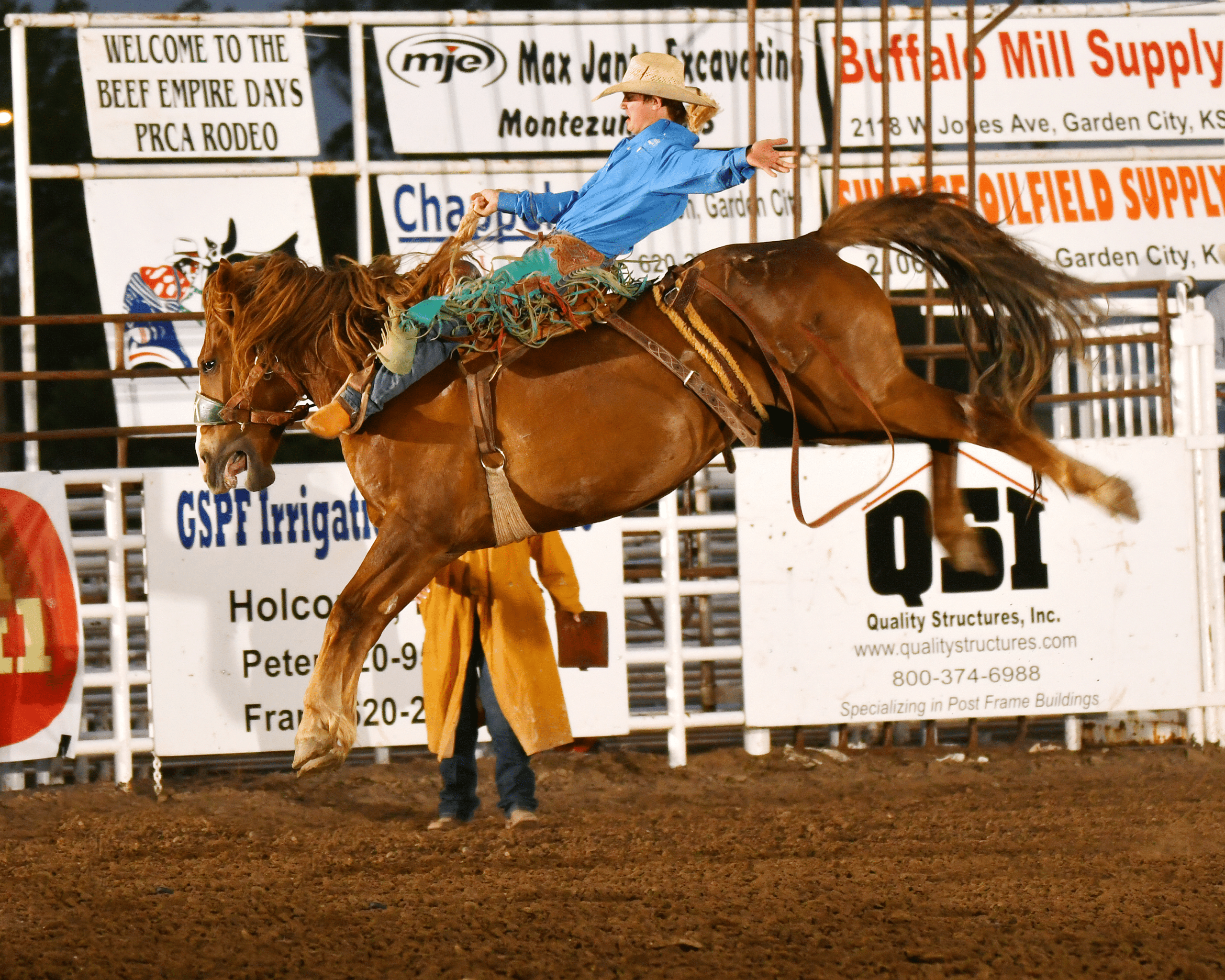Watching a rodeo is a good time, whether you know what’s going on or not. It’s about as American an experience as you can imagine. However, you can enjoy it a lot more if you have some idea of what’s going on.
You might have a vague idea about guys trying to ride bulls without getting knocked off, or kids riding little horses trying to lasso a sheep. But this image just scratches the surface of the complex world of rodeo.
If you’re interested in heading down to the Beef Empire PRCA Rodeo here in Garden City, it would help to know exactly what it is you’re watching.
In this three-part series, we will break down everything you need to know to understand the rodeo. Part one will cover the overview and history of the sport, part two will break down the timed events, and part three will cover the rough stock events. You won’t be a rodeo expert, but hopefully you will understand enough to enjoy your time at the event.
What Is Rodeo?
In the most basic sense, a rodeo is a sporting event designed to test the skill and speed of cowboys, cowgirls, and the horses they train and ride. The events of a rodeo mirror the skills required of professional cattle handlers. While some of these skills have become antiquated, many are as useful now as they were 200 years ago.
Think of it like this: If boxing is the sport of fighting, rodeo is the sport of “cowboy-ing.”
Origins of the Rodeo
If we’re going to talk about rodeo, let’s start at the beginning. Like many sports, rodeo evolved from practical tasks that people needed to do for survival. In this case, that meant rounding up and controlling farm animals.
The skills used in rodeo have been around for as long as humans have ridden horses or raised cattle, but rodeo as we know it evolved from the ranching practices and games of the 16th-century Spanish conquistadors that occupied the areas that would become the southern and western United States and Mexico.
The conquistadors and their Mexican ranch workers combined their ranch handling skills with Spanish bullfighting skills to form the foundations of rodeo. At the time, competitions were informal and were probably held just for friendly fun and entertainment between ranches.
The sport further evolved into a competitive enterprise once American cowboys started adopting and adapting the ranch handling skills they learned from Mexican cowboys. As their skill continued to evolve, it was only a matter of time before serious competitions would develop.
The First Rodeos
While there is some debate over when exactly the first rodeo was held, some claim the first rodeo was organized by William F. “Buffalo Bill” Cody in Nebraska in 1882 as part of his Wild West show. At the time, the public was fascinated with the wild west and Wild Bill sought to capitalize on this opportunity by including an exotic rodeo competition in his show.
However, what began as a novelty and a spectacle quickly evolved into a serious competitive sport that outgrew the theme-park setting of Wild Bill’s shows. As demand increased, competitions were organized separately and the modern rodeo took shape.
The PRCA
By the 1930s, rodeo had grown into a serious sport. When a group of rodeo competitors felt they were being treated unfairly by a show promoter, they walked out and organized the first major professional rodeo organization, which would eventually evolve into the Professional Rodeo Cowboys Association (PRCA).
Now, the PRCA is the largest rodeo organization in the world. Headquartered in Colorado Springs, Colorado, the PRCA sanctions rodeo events here in the US as well as in Mexico, Canada, and Brazil. For context, the PRCA circuit is basically like the NFL or NBA of rodeo, and it’s where the most elite rodeo cowboys on earth come to compete.
Garden City is fortunate to host the Beef Empire Days PRCA event, which allows residents of southwest Kansas to see the best upcoming rodeo professionals in the region.
The Rodeo Today
These days, rodeo is a serious competitive sport, with top competitions offering prizes of $100,000 or more. While not exactly comparable to the outrageous salaries earned by other professional athletes, the purses are significant and continue to grow every year.
Rodeo Events
The first thing to understand about a rodeo is that it isn’t just a single competition, but rather a collection of many different competitions all under a single banner. Instead of thinking of rodeo as a single sport, it’s more useful to think of rodeo as a track and field meet for cowboy skills.
Usually, a rodeo will feature seven different events to include bull riding, saddle bronc riding, bareback bronc riding, tie-down roping, team roping, steer wrestling, and barrel racing. Some rodeos have more events, some have fewer, but this is generally considered the core of the modern professional rodeo.
Don’t worry if these names seem like they come from a foreign language; we’ll go into detail on each of these events in the next two articles. However, this should give you a general idea of the variety of competitions you can expect at a rodeo event.
Rodeos also include a variety of other types of competition such as children’s events, musical acts, or variety shows. Going to a rodeo is a total entertainment experience.
Event Type
Competitive rodeo events can be divided into two main categories: timed events, where precision, skill, and speed are tested, and rough stock events, which are the ultimate test of grit, determination, and toughness.
Timed Events
As the name suggests, winners of timed events are determined by the cowboy or cowgirl who can complete the task in the fastest possible time while maintaining specific form and techniques. Timed events are the ultimate test of skill and precision.
Rough Stock Events
In rough stock events, the winner of the competition is determined by judges with the highest scoring competitor gaining the victory. While these events require significant skill, they also require stamina, strength, toughness, grit — and a little craziness.
Conclusion
Now, you should have a basic idea about what a rodeo is and how it came to be. From humble beginnings in the ranches of the wild west and south, rodeo has grown into a spectator sport with broad popular appeal.
In part two of this series, we will look at the timed events in greater detail and explain how winners are determined. Part three will cover the rough stock events. This way, you can follow along with all the action.
In the meantime, feel free to check out the website or Facebook page of Garden City’s own Beef Empire Days PRCA event. If you are looking for other activities and events here in Garden City, feel free to check out the other great content on our site.


